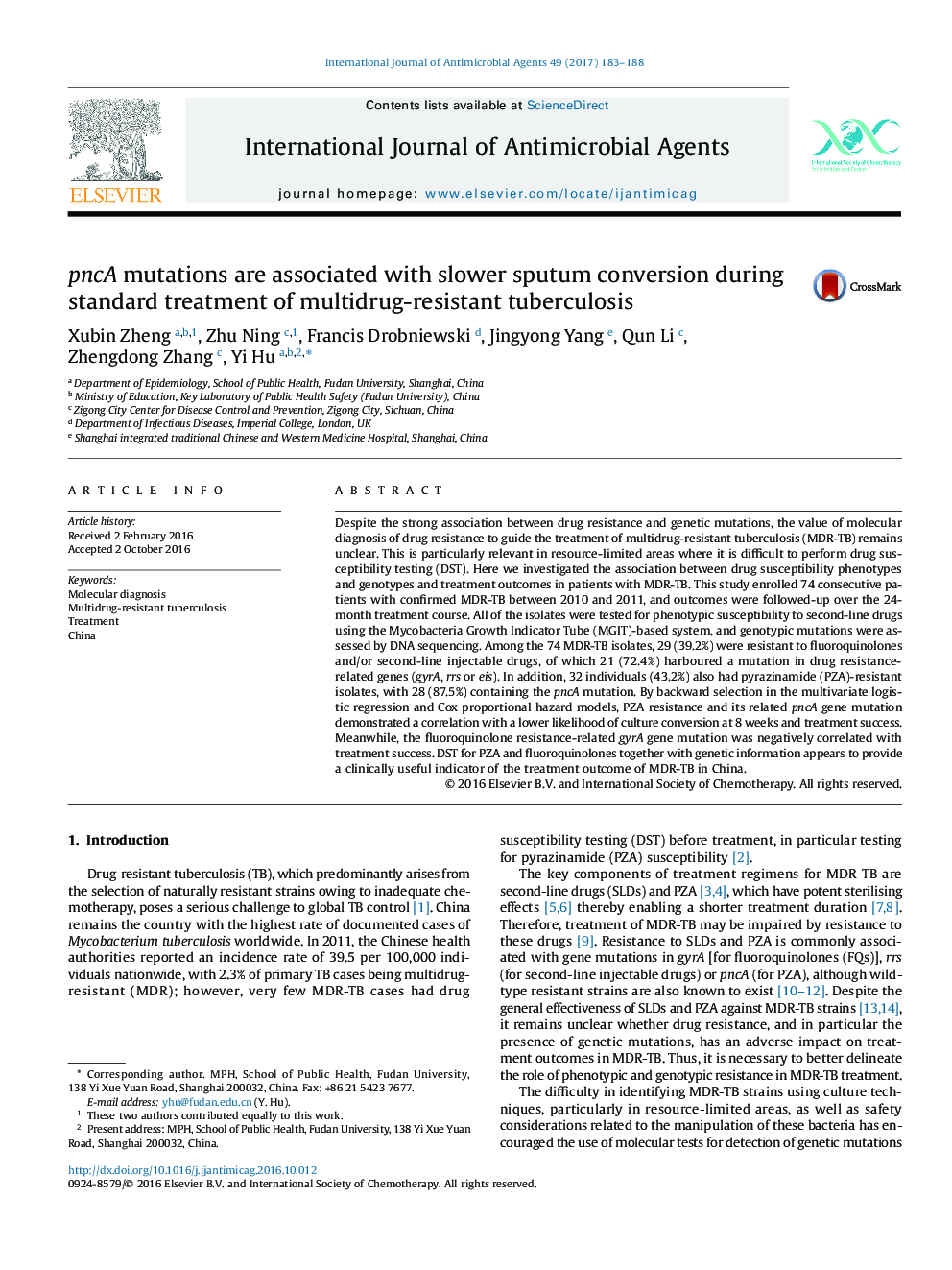| Article ID | Journal | Published Year | Pages | File Type |
|---|---|---|---|---|
| 5666970 | International Journal of Antimicrobial Agents | 2017 | 6 Pages |
â¢Clinical value of phenotypic and genotypic drug susceptibility testing in MDR-TB is proposed.â¢Mutations in designated genes and loci are consistent with phenotypic results.â¢Pyrazinamide and fluoroquinolone phenotypic resistance is associated with treatment outcome.â¢Genetic mutation in pncA gene indicates poor treatment outcome.â¢Susceptibility testing for pyrazinamide is necessary before treating MDR-TB.
Despite the strong association between drug resistance and genetic mutations, the value of molecular diagnosis of drug resistance to guide the treatment of multidrug-resistant tuberculosis (MDR-TB) remains unclear. This is particularly relevant in resource-limited areas where it is difficult to perform drug susceptibility testing (DST). Here we investigated the association between drug susceptibility phenotypes and genotypes and treatment outcomes in patients with MDR-TB. This study enrolled 74 consecutive patients with confirmed MDR-TB between 2010 and 2011, and outcomes were followed-up over the 24-month treatment course. All of the isolates were tested for phenotypic susceptibility to second-line drugs using the Mycobacteria Growth Indicator Tube (MGIT)-based system, and genotypic mutations were assessed by DNA sequencing. Among the 74 MDR-TB isolates, 29 (39.2%) were resistant to fluoroquinolones and/or second-line injectable drugs, of which 21 (72.4%) harboured a mutation in drug resistance-related genes (gyrA, rrs or eis). In addition, 32 individuals (43.2%) also had pyrazinamide (PZA)-resistant isolates, with 28 (87.5%) containing the pncA mutation. By backward selection in the multivariate logistic regression and Cox proportional hazard models, PZA resistance and its related pncA gene mutation demonstrated a correlation with a lower likelihood of culture conversion at 8 weeks and treatment success. Meanwhile, the fluoroquinolone resistance-related gyrA gene mutation was negatively correlated with treatment success. DST for PZA and fluoroquinolones together with genetic information appears to provide a clinically useful indicator of the treatment outcome of MDR-TB in China.
